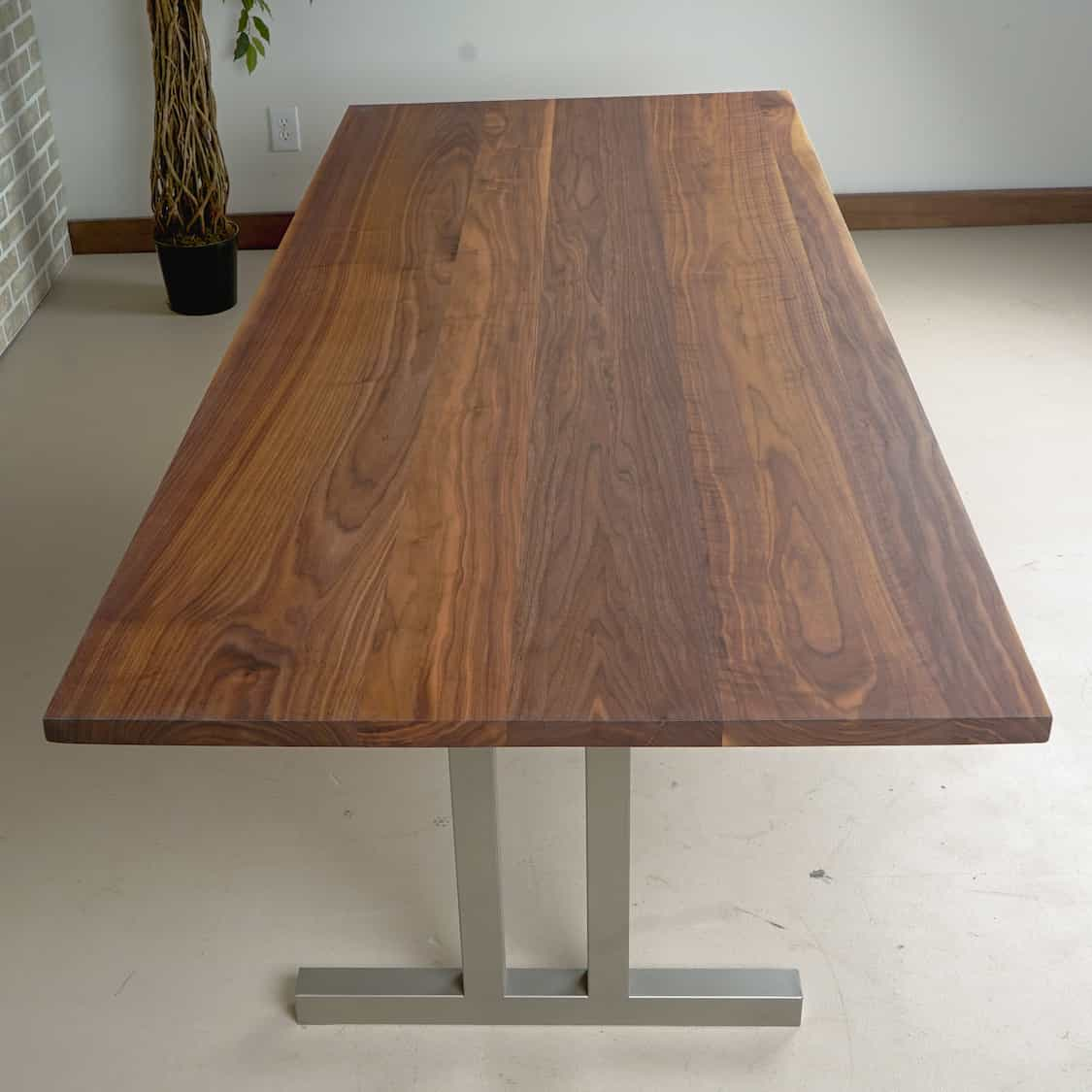Checking Out the Various Kinds Of Dining Table Legs Wood for Your Eating Area
The choice of dining table legs wood can greatly affect both the practical and aesthetic qualities of your dining space. Strong wood alternatives, such as oak and walnut, offer a traditional look with unmatched sturdiness, while crafted wood alternatives supply innovative styles that mimic the richness of natural grains.
Solid Wood Options

Unlike engineered products, solid timber is much less susceptible to bending and damage over time when effectively maintained. Each piece of solid timber is one-of-a-kind, showcasing private characteristics that add to the beauty and character of the eating table.
Additionally, solid wood can be ended up in many means, varying from all-natural oils to stained coatings, enabling property owners to customize their furnishings to match their style. In summary, picking solid timber for dining table legs not only guarantees structural stability yet also improves the aesthetic appeal of the eating area, making it a beneficial financial investment for any kind of home.
Engineered Wood Alternatives

Plywood, built from several layers of timber veneer, is steady and particularly strong, making it a superb option for eating table legs. Its layered structure permits it to withstand modifications in humidity and temperature level better than typical strong wood. MDF, on the various other hand, offers a smooth surface area for paint or veneering, allowing developers to attain a refined appearance while preserving structural integrity.
When choosing crafted timber alternatives, it is essential to consider the intended usage and preferred visual. These products not only improve the functionality of eating rooms however also enable for higher design versatility, ensuring that typical and contemporary styles can coexist harmoniously.
Reclaimed Timber Includes
Redeemed timber provides an one-of-a-kind blend of sustainability and personality, making it an increasingly preferred option for eating table legs. Sourced from old barns, factories, and other structures, recovered wood embodies a history that new materials just can not duplicate. Each item lugs its very own tale, marked by distinct blemishes, knots, and varying grain patterns, which add to a table's unique aesthetic charm.
Along with its aesthetic beauty, redeemed timber is an environmentally friendly option. By repurposing previously utilized materials, it decreases the demand for new lumber, therefore helping to reduce and conserve forests waste. This straightens with a growing consumer choice for sustainable techniques in home furnishings.
Additionally, redeemed timber is usually much more durable than newly harvested wood due to its age. The all-natural drying procedure that redeemed wood undergoes outcomes in a denser and more powerful material, making it much less prone to bending and splitting. This boosts the longevity of dining tables, enabling them to withstand the rigors of daily usage.
Softwood vs. Hardwood
When choosing eating table legs, recognizing the differences in between softwood and hardwood is crucial for achieving both functional and visual goals. Softwoods, acquired from coniferous trees, such as pine and cedar, are characterized by their lighter weight and ease of manipulation. They normally exhibit a more rustic look, making them ideal for country-style or laid-back dining areas. However, softwoods are generally much less sturdy than hardwoods, which can be a consideration for households or those seeking longevity in their furnishings.
On the various other hand, hardwoods, sourced from deciduous trees like cherry, oak, and maple, are renowned for their density, toughness, and durability. The detailed grain patterns and abundant colors of hardwoods supply a advanced and timeless appeal, making them suitable for official dining settings. While hardwoods have a tendency to be much more pricey and heavier, their durability against damage frequently justifies the investment.
Eventually, the option in between softwood and hardwood for eating table legs should align with your layout vision, use needs, and spending plan, guaranteeing that your dining area shows your individual design while continuing to be practical gradually.

Coatings and Therapies
The visual charm and longevity of table legs can be dramatically improved with various surfaces and treatments. These processes not just secure the wood from damage but likewise raise its look, permitting it to match varied indoor styles.
One usual therapy is tarnishing, which permeates the wood and improves its all-natural grain while including color. Spots supply a rich, elegant look, making it possible for house owners to match their furniture with existing decor. Conversely, clear surfaces such as polyurethane or varnish create a protective layer without changing the wood's additional reading initial tone, making certain longevity against deterioration.
Additionally, all-natural oils, like tung or linseed oil, nurture the wood and supply a refined luster, all while being eco-friendly. These oils enable the surface to breathe, stopping wetness accumulation and prospective bending.
For those seeking a rustic charm, weathered or distressed surfaces can be related to develop an aged look, adding personality to the piece. Eventually, the option of treatments and surfaces depends on personal preference, desired looks, and the particular timber kind, making it essential to consider these factors when picking eating table legs for your space.
Verdict
Solid timbers, engineered choices, and redeemed options each offer unique advantages, catering to different preferences and requirements. Ultimately, the selection of check out here timber type must align with preferred style, toughness, and environmental considerations, improving the general dining experience.
The option of eating table legs wood can greatly impact both the aesthetic and functional qualities of your eating area - Dining Table Legs Wood. Solid wood options, such as oak and walnut, offer a traditional appearance with unmatched toughness, while crafted wood options use ingenious layouts that imitate the splendor of natural grains. Solid timber provides a classic top quality that can raise the total layout of a dining room. Each piece of strong timber is one-of-a-kind, showcasing private features that add to the find more info beauty and character of the eating table
Additionally, redeemed timber is typically much more long lasting than newly gathered timber due to its age.
Comments on “Discover Versatile Styles for Custom Dining Table Legs Wood Solutions”